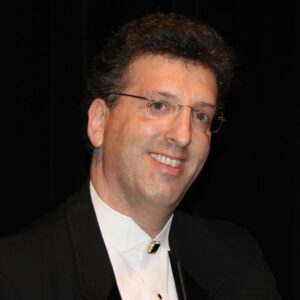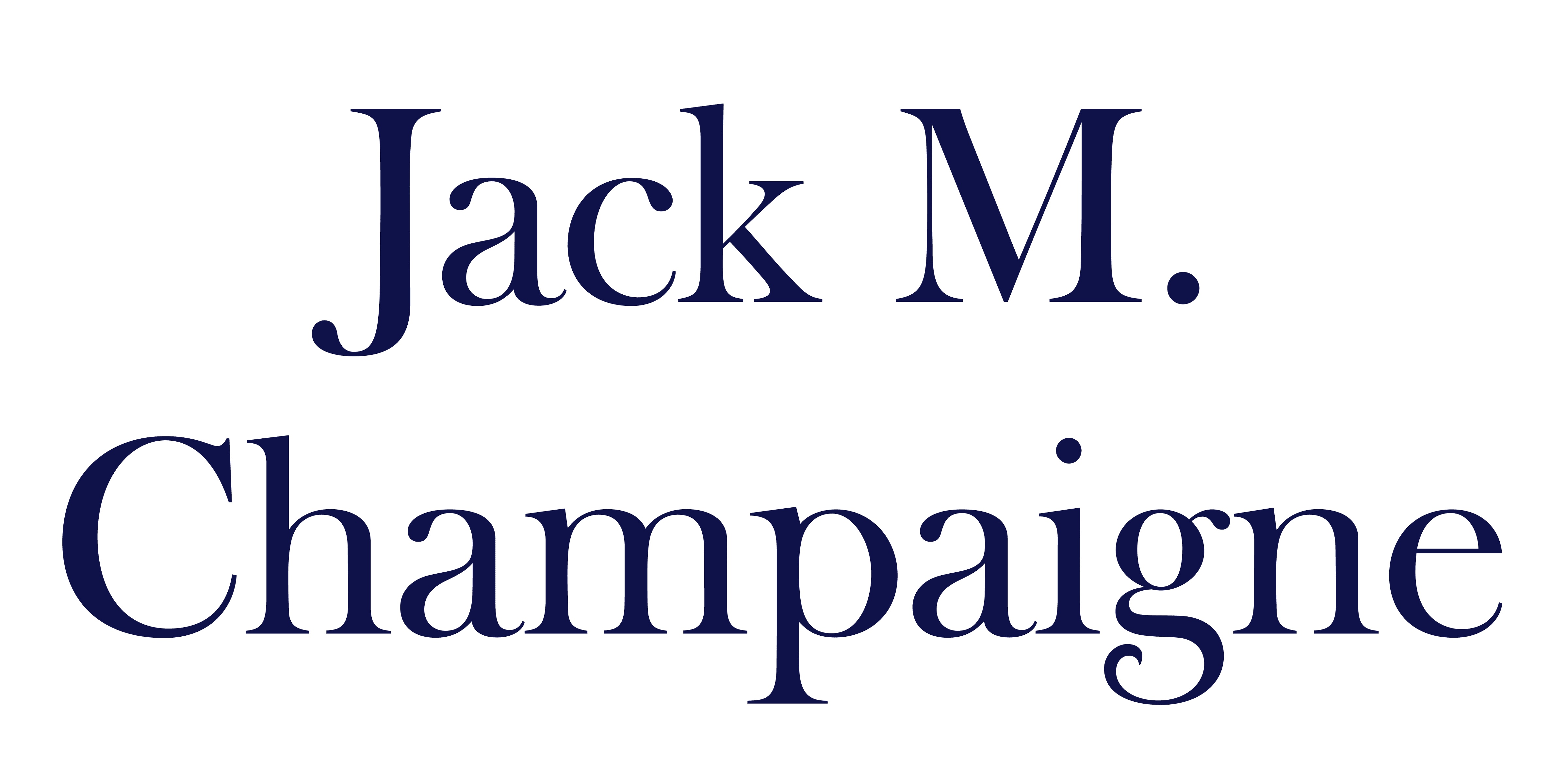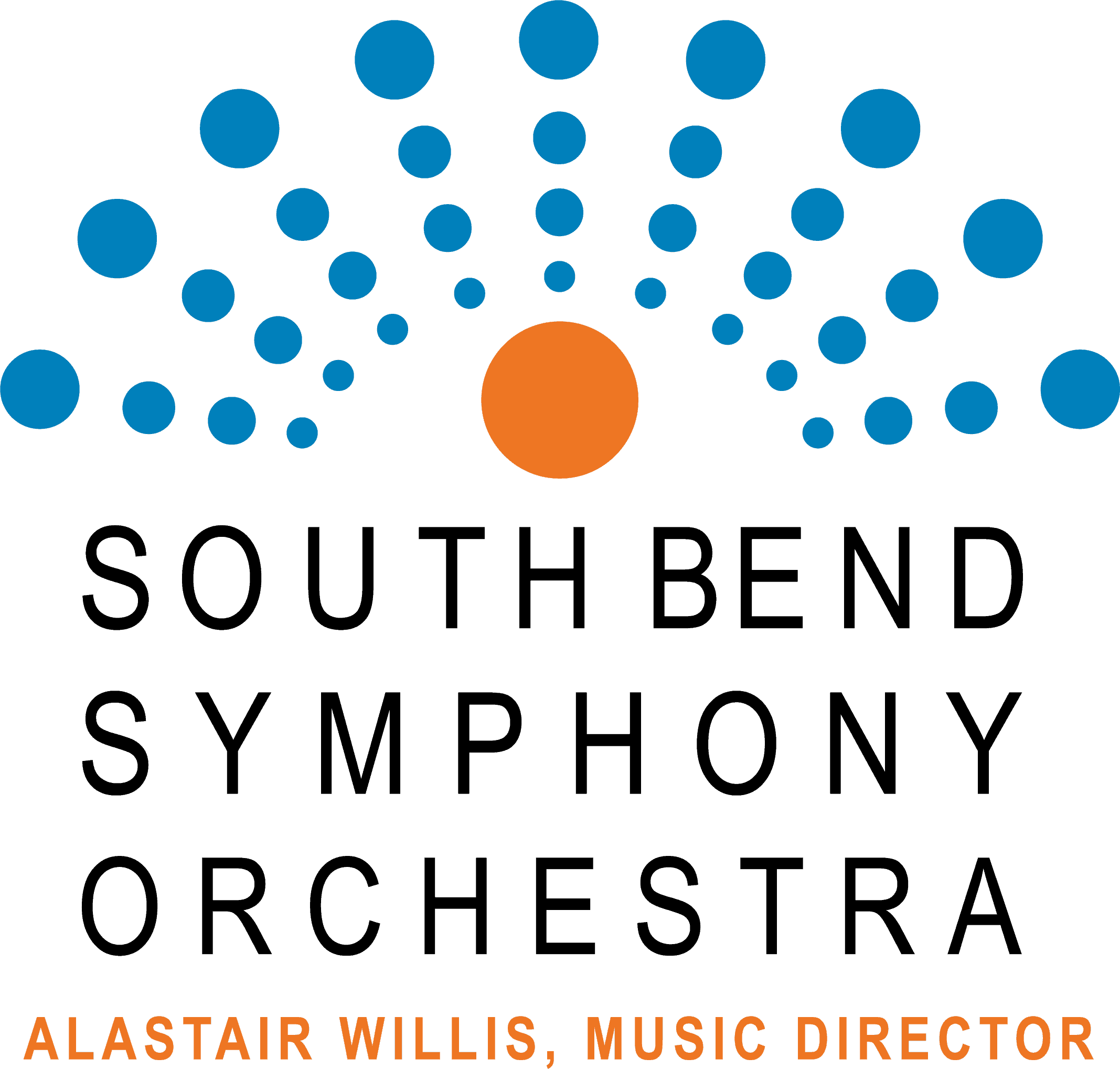May 24, 2025 / 7:30 p.m.
Enjoy an evening celebrating the vibrancy of the American spirit and classical mastery, featuring Copland’s iconic Fanfare for the Common Man, Hailstork’s dynamic Piano Concerto No. 3, Boyer’s patriotic Rhapsody in Red, White and Blue, and the lush, emotive Symphonic Dances by Rachmaninoff with guest pianist Jeffrey Biegel.
Program
COPLAND
Fanfare for the Common Man
ADOLPHUS HAILSTORK – (Indiana Premiere)
Piano Concerto No. 3
PETER BOYER – (Indiana Premiere)
Rhapsody in Red, White & Blue
– Intermission –
RACHMANINOFF
Symphonic Dances
I. (Non) allegro
II. Andante con moto (Tempo di valse)
III. Lento assai – Allegro vivace – Lento assai. Come prima – Allegro vivace
Program Notes
Fanfare for the Common Man
AARON COPLAND
Born: November 14, 1900, New York, New York
Died: December 2, 1990, North Tarrytown, New York
Composed: 1942
Premiered: March 12, 1943, Cincinnati Music Hall, Cincinnati Symphony
Duration: 4 minutes
Despite his training in Paris, Copeland is a composer who has often come to represent America through his music. Appalachian Spring, Rodeo, Billy the Kid, the list goes on and on in terms of pieces that, at least in today’s world, hold “American” qualities. However, in terms of patriotism, no other piece in his oeuvre comes close to Fanfare for the Common Man.
Commissioned by Eugene Goossens, conductor of the Cincinnati Symphony Orchestra, it was one of several fanfares commissioned from American composers as part of a larger project to honor the American entry into the Second World War in December of 1941. It was a continuation of a similar project Goossens undertook during the First World War, in which they commissioned fanfares from British composers. The title comes from a speech by then Vice President Henry A. Wallace, who proclaimed the 20th century as “The Century of the Common Man.”
Unlike the other fanfare commissioned, Fanfare for the Common Man has remained a staple in American symphonic repertoire. Leonard Bernstein even called it ‘the world’s leading hit tune.” Though that moniker may no longer be accurate, the work has been used extensively in modern media, particularly that involving the United States Armed Forces. John Williams’ score for the war film “Saving Private Ryan” drew heavily on the sound and tone this piece created.
Piano Concerto #3, “The Way Things Really Are”
ADOLPHUS HAILSTORK
Born: April 17, 1941 – Rochester, NY
Composed: 2024
Premiered: February 2025 with the Pacific Symphony, Renée and Henry Segerstrom Concert Hall, Irvine, California
Duration: 20 minutes
My second piano concerto is a tranquil piece that is subtitled “The Peaceable Kingdom.” In contrast to that the third piano concert is a turbulent piece that is subtitled “The Way Things Really Are.” – Adolphus Hailstork – 2024
Rhapsody in Red, White, & Blue
PETER BOYER
Born: February 10, 1970, Providence, Rhode Island
Composed: 2020-2022
Premiered: 2023
Duration: 18 minutes
This work was conceived by the prodigious American pianist Jeffrey Biegel, who approached me in early 2020 with his ambitious idea for a project to celebrate the centennial of George Gershwin’s Rhapsody in Blue in February 2024. I hesitated before accepting the commission, knowing that the piece I was being asked to compose would be performed repeatedly alongside RIB—one of the most iconic and beloved works of American music. I wondered how any piece of mine could withstand the inevitable comparisons to the Gershwin work—especially with Jeffrey’s chosen title, Rhapsody in Red, White & Blue. However, he is as persuasive as he is gifted, and so I accepted the commission.
Like the Gershwin work, my Rhapsody is in a single long multi-sectional movement. As Gershwin did a century ago, I have attempted to capture a sense of American energy and optimism in much of this music. Though my musical style typically does not employ any jazz elements, in this work, it seemed appropriate to include some allusions to a 1920s, “quasiGershwin” style. There is one section of the work, largely pastiche, which does this in the form of a “bluesy scherzo.” The slow, lyrical section of the work, coming after its midpoint, might be heard as both an allusion to America’s wide-open spaces and to my personal belief in the country’s promise despite its many challenges. — Peter Boyer, February 2023
Symphonic Dances
SERGEI RACHMANINOFF
Born: April 1, 1873, Semyonovo, Russian Empire
Died: March 28, 1943, Beverly Hills, California
Composed: 1940 Premiered January 3, 1941, Academy of Music, Philadelphia Symphony
Duration: 35 minutes
Final works by composers often hold a special place in the romantic imagination, such as works like Mozart’s Requiem, Schubert’s last piano sonatas, or the final string quartets of Beethoven. These pieces can culminate in a composer’s life work or seem to transcend earthly concerns. J.S. Bach provided the B-minor Mass, a grand finale to his sacred music, and The Art of Fugue, a cerebral epilogue. Similarly, Sergei Rachmaninoff’s Symphonic Dances is one of the most intentional final compositions.
Rachmaninoff left Russia in 1917 after the Revolution and spent his later years in New York, France, and Switzerland. By 1940, he had relocated permanently to the United States to escape the Second World War. During this period, he had not composed a piece in almost four years. However, that summer on Long Island, he composed Symphonic Dances, which became his final composition, even though he continued to perform for another two years.
Initially, Symphonic Dances was conceived as a collaboration with Russian choreographer Michel Fokine, known for his work on The Firebird, and Petrushka with Igor Stravinsky. Rachmaninoff imagined a ballet titled Fantastic Dances, with movements named Midday, Twilight, and Midnight. When the project did not materialize, he reworked it into an orchestral piece for the Philadelphia Orchestra and conductor Eugene Ormandy.
The first movement of Symphonic Dances begins with mechanical energy that soon gives way to a stunning oboe, clarinet, and alto saxophone solo. This intimate passage, characterized by intricate woodwind interplay, leads to a lush string section melody that recalls themes from his First Symphony, allowing Rachmaninoff to reflect on his earlier career struggles. The second movement is a nostalgic Viennese waltz, reminiscent of Tchaikovsky’s ballets, evoking a longing for a bygone era. The finale features lively rhythms and syncopations, perhaps influenced by contemporary composers like Aaron Copland. A theme from Rachmaninoff’s All-Night Vigil appears, adapted into a jaunty motif. The piece concludes with the Dies Irae chant from the Requiem Mass, transformed into a joyful and triumphant statement, ending with the exclamation “Alliluya,” celebrating life’s journey with vitality and style.
Jeffrey Biegel, Piano

Jeffrey Biegel is a Grammy winning pianist and composer known for his successful career, which has been marked 44 by concerts with major orchestras and over 25 commissioned works. Overcoming childhood hearing issues, he developed a unique connection to music. During the 2020 pandemic, he composed pieces like “Waltzes of Hope” and “Three Reflections: JFK, RBG, and MLK.” In 2021, he premiered “Reflection of Justice: An Ode to Ruth Bader Ginsburg” with the Dallas Symphony Orchestra and Ellen Taaffe Zwilich’s “Remembering Ruth Bader Ginsburg” with mezzo-soprano Denyce Graves. In 2022, Biegel premiered works by Jim Stephenson and others. In 2023, he launched the 50-state Rhapsody National Initiative, collaborating with the Utah Symphony and Peter Boyer. Biegel’s accolades include a Grammy for Kenneth Fuchs’s “Piano Concerto: ‘Spiritualist’” with the London Symphony Orchestra. He has commissioned works by renowned composers and is a faculty member at Brooklyn College’s Conservatory of Music.
Meet the Musicians Here!
Sponsors


